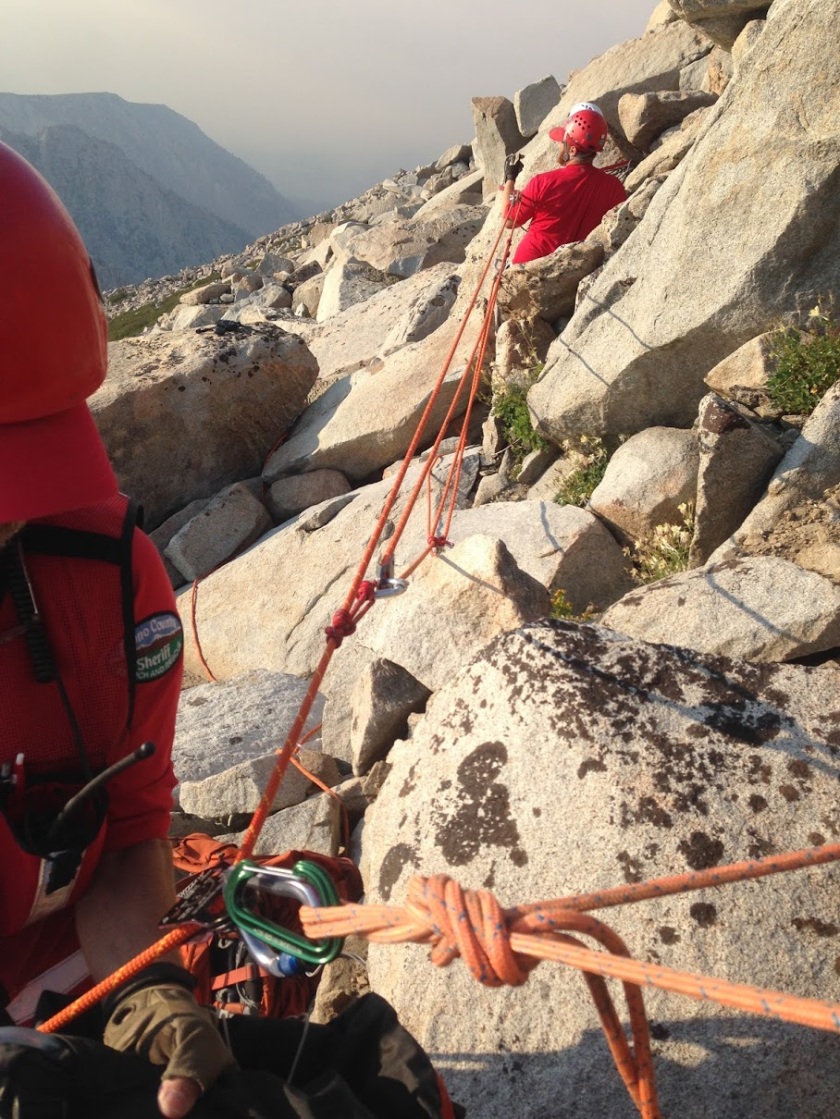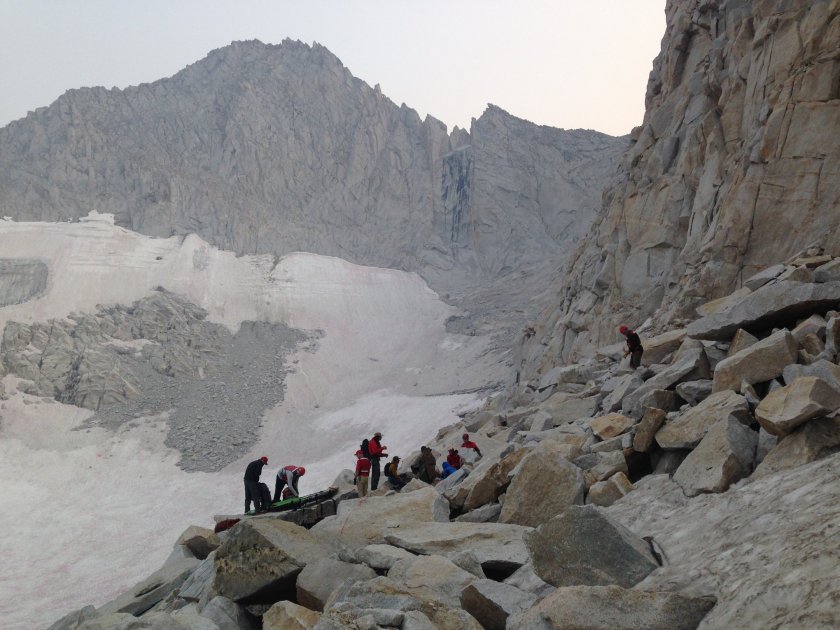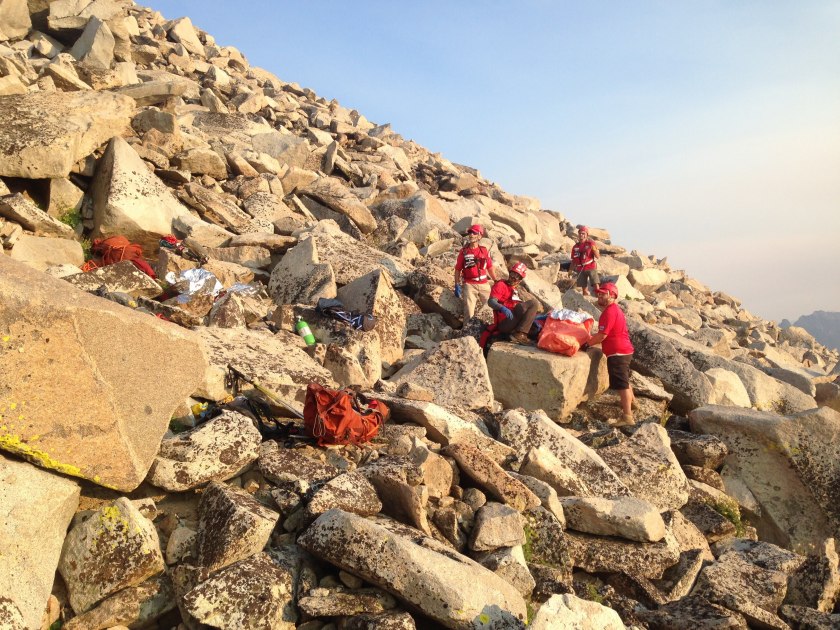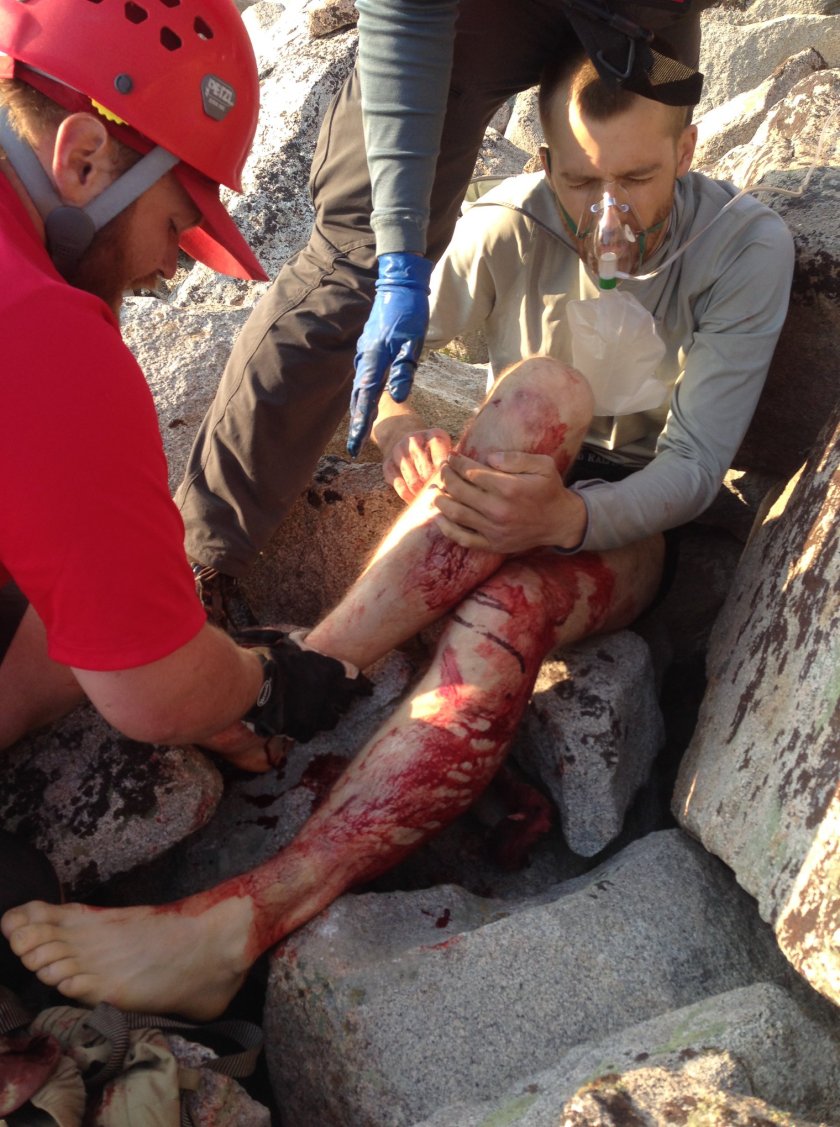This post contains graphic content.
To quote Forrest Gump, Search and Rescue (SAR) is like a box of chocolates: you never know what you’re going to get. Like most first responders the bulk of SAR work is actually fairly mundane and uneventful. But 2018 has proven to be one for my record books. While last week’s volume has been high with nearly a call per day (and two in one day), they’ve also required some of our most advanced skills.
The Sheriff’s Office has clarified its policy on posting pictures so I feel a little more comfortable sharing some of the work we’ve done, hence this post.

On the first day of January, 2018, we responded to a fallen climber. I’ve written about it previously so I won’t belabor things. Eight months later though I’m amazed that something so mind-blowing at the time (getting lowered out of a chopper to treat a heavy trauma patient) wouldn’t rank amongst the more trying moments of my SAR career.

The amount of training I’ve been through in the last year has been nothing short of incredible. There is of course all the team specific training we put on ourselves. We build mechanical advantage systems and haul heavy loads across parking lots. I rappel off almost everything to learn the different friction feels of various ropes through various descent control devices coupled with different friction hitches.
But then there’s the formal training. Weeks in Alaska getting my Wilderness EMT. The five day Rigging for Rescue basic series. Stop the Bleed. It’s just a non-stop battering ram of advancement in technique, repetition, and locking it in with your teammates.

Most of us have been through training that we’ll never use. It’s rare that you learn something, get good at it, and then 24 hours later you’re using it in the field to save lives. But this year that’s exactly what happened.

On July 29th, our team was dispatched to “a call from help” coming from the Conness Glacier. Trapped underneath roughly two tons of granite, a man was pinned with crush injuries. The same mechanical advantage skills we had been practicing all summer, skills designed to lift patients and rescuers up through vertical space, quickly transformed into a technique to precisely move thousands of pounds of granite.



Moving boulders off trapped climbers is not a skill practiced by most rescue teams, let alone something they’ll ever do in the field. Crush syndrome is one of those topics you learn in EMT school that is glanced over: it’s common enough in urban settings because of motor vehicle accidents but in that urban world a hospital is generally not far away. Having a crushed patient in your care for hours, no one needs to tell you that field amputation is a real possibility if your team can’t get the job done. Even if you can extract, the rhab-d clock has been ticking from the start with no mercy.

The call up on Conness in late July scrambled me a bit. It’s hard watching someone in pain, and harder still when the math is not in your favor. My teammate told me later that the rock is what hurt him, we saved his life. Intellectually I know that but the trauma, pain, and adrenaline of the whole operation (nevermind the part where we had to climb onto and off of a glacier ourselves) was a lot to process. The next day our team met up at lunch and disinfected our equipment.

The next night I found myself in an elderly woman’s tent, 7 miles in, an IV bag hung ingeniously by a stethoscope (good work, H40 crew). Treating her, I was happy: she was not actively dying in front of me. My blue nitrile gloves were more of a formality than anything really protecting me from gushing blood or CSF. There was urgency and we needed to do our jobs, but compared to the last few calls this was downright pleasant.
The calm didn’t last.

24 hours later our team would again be dealing with crush trauma, a call remarkably similar to the one from only a few days prior. Perched on rocky mountain top, an operation that most rescue teams will never perform played out with spooky deja vu.

Another aspect of SAR is that we’re all volunteers. Our day jobs sort-of care about our SAR responsibilities, but it gets old for them fast. In California we’re protected by the Labor Code, but you can tell it grinds on people when you leave in the middle of meetings or your coworkers need to pick up your slack. The first time or two it’s exciting, but eventually I’m pretty sure it gets old for them.
This isn’t getting into the impact it has to our families or friends, all of which end up being “SAR widows”. The phone rings, the world stops, and I’m out the door. I might be back in 10 minutes, 10 hours, or in rare cases 10 days. Emergencies are quite inconsiderate like that and while we have other good medical providers and riggers on the team, we’re a small team. In the second picture above, counting the guy taking the picture, there were five of us.
Five people to handle three mechanical advantage systems, extricate a patient, communicate with our base and the overhead choppers, and provide medical care, all at the same time.
The next day I went camping with my kids, happy to take a break from SAR and spend some time with two little people in the prime of their lives that weren’t suffering from massive trauma or medical illness.
While walking around Devil’s Postpile, my phone rang. SAR call: Devil’s Postpile, right less than a mile from where I was standing. A deputy that I work with walked the girls over to the ranger station and got them into the Junior Ranger program while I rigged a raise and lower system for the litter team, extracting a patient.

At the same time, an 8 year old boy was reporting missing in a remote part of the county, our team responded. The next day (yesterday), a patient was airlifted for medical reasons.
We were notified that our team will be covering a large portion of Tuolumne county because wildfire has shut down critical highways in their area, blocking their team from access.
Today is a new day and I don’t know where it will lead. I do know that my harness has my technical gear. My medical bag is restocked. The battery on my team radio is charged. The fuel tanks are full on our rescue trucks. Three gross Cliff bars that don’t melt in the summer are zipped back into my pack.
And I know I’m lucky enough to work with a team of professionals that I would and do trust my life with more often than I can count.
Thanks so much to you and rest of the SAR team for saving my life, I will never forget your generosity. Feel free to post any images or details of my story I enjoyed reading about it from your perspective.
LikeLike
Oh my God.. So much going on, I believe you when you say it’s a process to let everything sink in. I was drawn by your story and wanted to know more. I hope your patients are safe and sound now and that you had a lot of fun with your girls!
Can’t wait to learn more, thank you for the work that you do!
Gaia
LikeLike
Props!–you do great work!
Jim Kalember https://www.linkedin.com/in/jkalember/
LikeLike
Crazy summer for your team. Processing all of the rescues must be difficult as you haven’t had a break in between. I hope I never need your team in the backcountry for myself or family…but glad you have a team you feel comfortable with if the need should arise. If my “day/night job” could survive with me being gone in a moments notice I would consider joining you all.
LikeLike